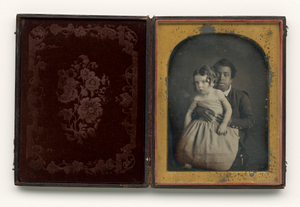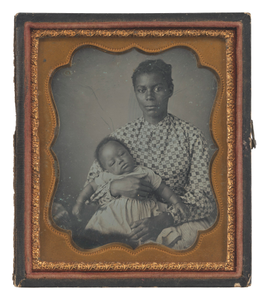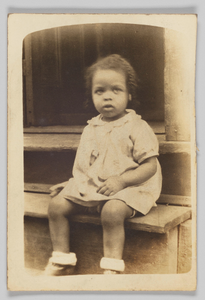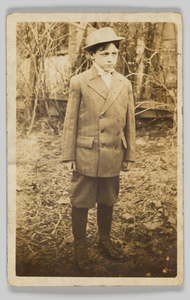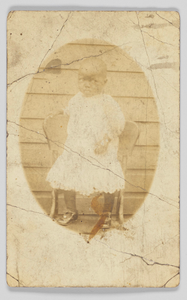Daguerreotype of a boy holding a white baby
View
@ National Museum of African American History and Culture
Unidentified Unidentified Child or Children
Description
The daguerreotype was the prevailing form of photography in America from 1839 until the late 1850s. Since the daguerreotype process did not involve a negative, each was a unique image. This daguerreotype is an extremely high quality production indicated by the very expensive plate with its hand buffed surface.The image presents a unique portrayal of a black servant caring for the white master’s child. Here, rather than the usual “mammy” holding an infant, a black male youth holds a young child looks directly into the camera. The photo is so early, he would not have been influenced by the usual protocol for such portraits, such as looking to the side while “posing.”A cased daguerrotype depicting a black boy holding a white male baby on his lap. The baby wears a dotted gown and has hair fashioned into ringlets. The boy wears a dark colored jacket with three bright buttons at the cuff and looks straight ahead at the camera, his hands at the baby's waist. The daguerrotype is in a rectangular gold metal frame with a curved top, and housed in a hinged brown case with red velvet interior and two hook and eye clasps on one edge.
Image
Silver Amalgam, Silver On Copper Photographic Plates
Collection of the Smithsonian National Museum of African American History and Culture
